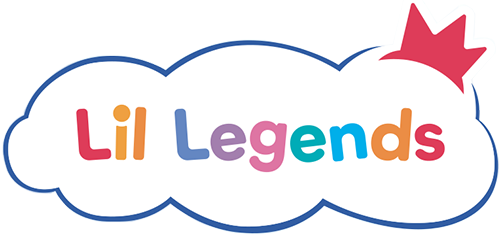
Step-by-Step Guide to Start Phonics Learning for Kids
Share
Learning to read is one of the most thrilling accomplishments of early childhood. And when it comes to establishing that foundation, phonics is the answer.
Phonics provides children with the knowledge that links letters and sounds, enabling them to sound out words and read independently. And the result? Independent happy book loving readers.
If you are a parent and/or teacher wondering how to get started – or are looking to know what phonics reading books to select – here you will find a step-by-step guide to teach phonics from A-Z, and suitable for every day.
Step 1: Understand What Phonics Is and Why It Matters
Phonics instructs children that letters (graphemes) are associated with sounds (phonemes). Because these children are taught how to merge these sounds, they are able to easily read new words.
So why should you care?
-
Phonics teaching helps children read more accurately and with greater fluency.
-
It develops decoding, or reading, skills of words that the student has never seen before.
-
It also strengthens their confidence because it teaches them to read independently, not to guess.
Phonics can be thought of as offering your child with the “sound map” for language. Once they do, a whole universe of reading is opened up.
Step 2: Build Phonemic Awareness First
Prior to leaping into printed letters, help your child tune to sounds. This is known as phonemic awareness – the ability to notice and manipulate sounds in words that are spoken.
Play simple games:
-
What sound does a dog start with?
-
Clap out the syllables in “el-e-phant.”
-
Rhyme with words, such as cat-hat-bat.
-
Ask: “Which word has the /m/ sound: map, tap or pen?”
These fun sound games are what will later help your child associate sounds in words with letters.
Step 3: Introduce Letter Sounds Gradually
Introduce letters as soon as your child is able to identify and identify sounds. Go at a steady pace.
-
Start with easy consonants and short vowels – a, m, s, t, n.
-
Transition to CVC (Consonant-Vowel-Consonant) words such as cat or pen.
-
Include blends (st, bl) and digraphs (sh, ch, th).
-
Later explore vowel combinations like ai, ee, and oa.
Teach by sound first, letter name second. And – remember – the practice is what counts, not the speed.
Read More: Why Hands-On Learning Matters for Preschoolers?
Step 4: Choose the Right Phonics Books
There are books you use that can influence or disrupt your child’s reading experience. The best phonics books are formatted, well-designed and well tailored with what your child is learning.
Look for books that:
-
Introduce one sound pattern at a time.
-
Use decodable words your child can sound out.
-
Offer repetition and short sentences for practice.
-
Include bright pictures that support comprehension.
Recommended: The Lil Legends Phonic Reading Collection is a good starting point. These books are intended for students between 4 and 6 years old, with three-letter words and consonant blends for ages 4 through 6.
Each story stresses a set of sounds and blends that helps children progress along the natural path from letters to words, starting with letters. The bright colors and cheerful illustrations make reading fun, not work.
Step 5: Create a Daily Routine
Be consistent! A little bit of practice daily helps retain the knowledge.
Here’s an easy routine to implement:
-
Read together 10-15 minutes a day.
-
Sound words out slowly and allow your child to finish them.
-
Go back to previous pages to revise and build confidence.
-
Finish the session with a short game - for example, letter spotting in the environment.
As it becomes part of your daily rhythm, the advancement will come naturally.
Step 6: Track Progress and Handle Challenges
Learning phonics is seldom a linear process; each child progresses at his or her own pace.
Signs of progress:
-
Your child is able to blend sounds to read short words.
-
They identify patterns such as “sh,” or “ch.”
-
They start to decode new words without making any guesses.
Common challenges & solutions:
-
Struggling to blend: Slow it down. Attempt shorter two-phoneme words such as at and in.
-
Sounding out letters: Use games or flashcards to review earlier letters.
-
Interest wanes: Try using a fun phonics reading book or reading outside as a change of pace.
Additionally, a lot of patience, praise, and playfulness will go a long way.
Step 7: Move Toward Fluency and Comprehension
When decoding has become easier, it is time to move past “sounding out” – to comprehension.
Encourage your child to:
-
Re-read phonics books to build fluency.
-
Ask elementary understanding questions (“Who found the cat?”, “Why was the sun bright?”).
-
Write out simple words or sentences that they have just read. It narrows the gap between word reading and comprehension reading.
Step 8: Balance Phonics with Story Reading
Phonics decodes words, but children also need exposure to rich language. In addition to phonics activities, continue to read storybooks together.
Phonics books instruct “how to read,” but storybooks convey “why to read”— to learn about feeling, adventure, and imagination. The two together are essential to developing lifelong readers who are confident in their reading skills.
Conclusion
Beginning to learn phonics is like finding the hidden door; once a child understands how sounds and letters work together, the world opens to reading.
It doesn’t have to be difficult if you are patient, use the proper methods, and provide phonics reading materials that are suitable for your child’s age and level.


